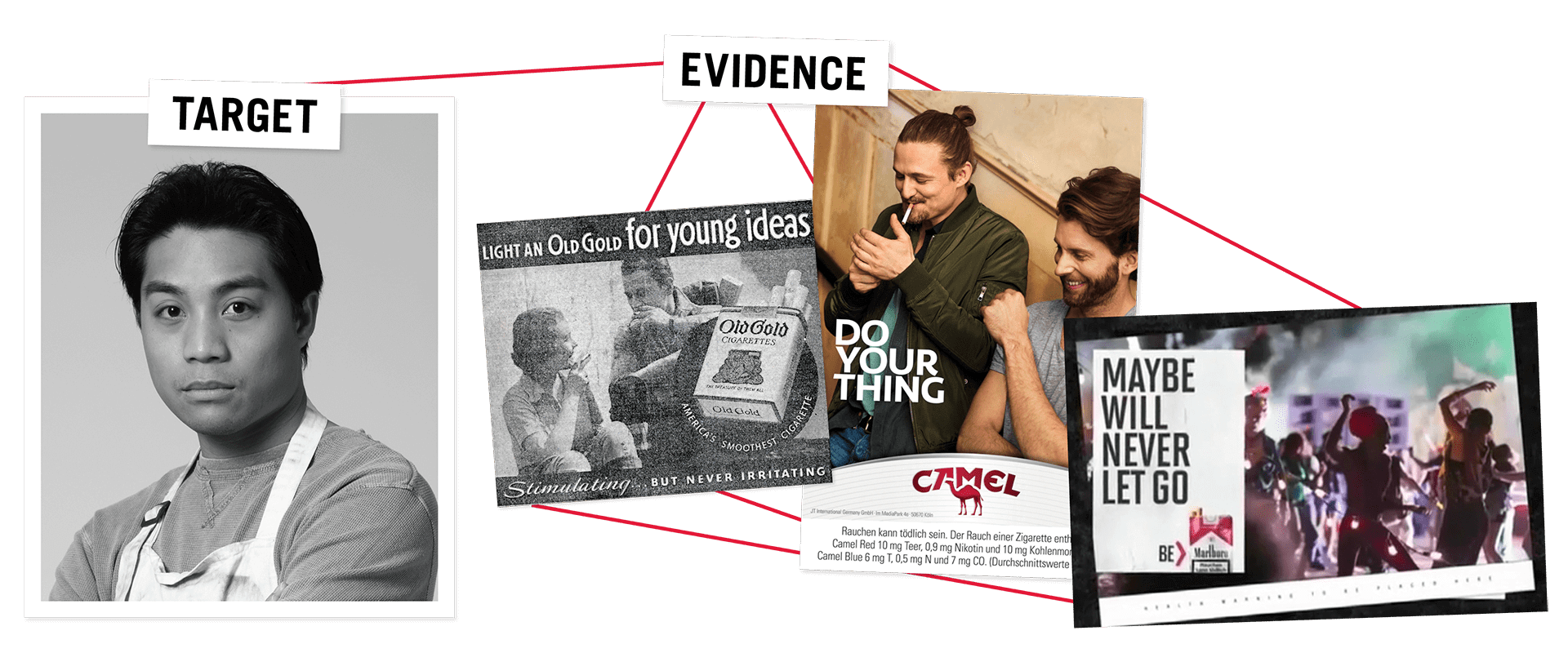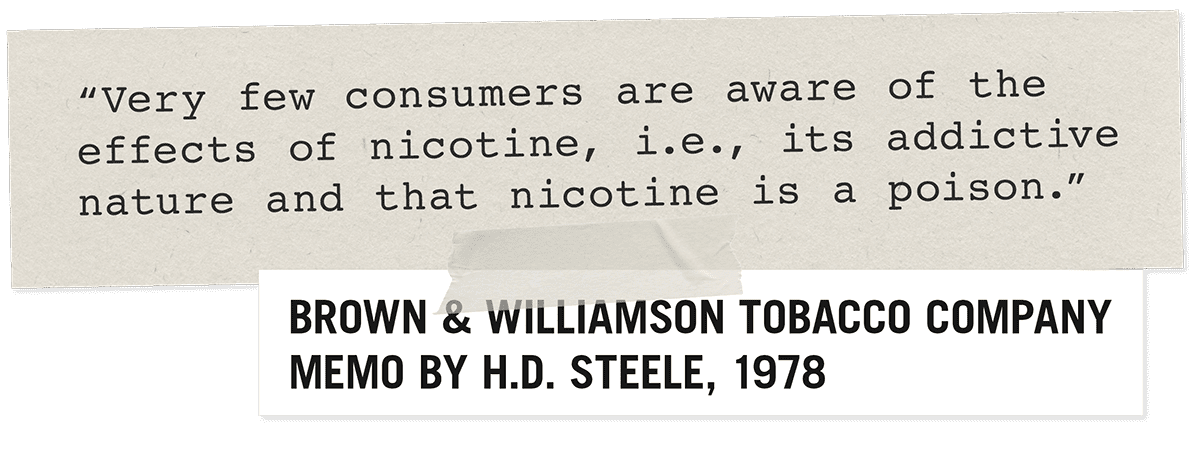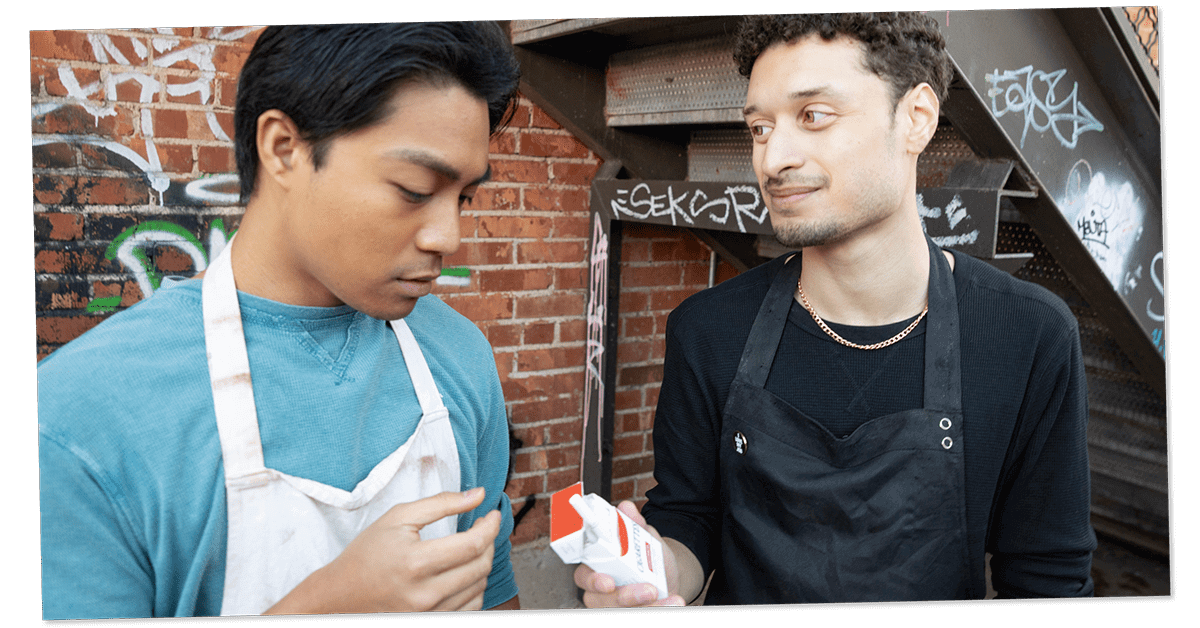Social smoking
“Have cigarettes, those filthy, cancer-causing things — and still the No. 1 cause of preventable death in the United States… lost their taboo?”
-John Ortved (Freelance Writer and Author)
“Social smoking doesn’t count, right? I mean, one cigarette with a beer isn’t gonna kill ya!” “Come on! Loosen up! Plus, it tastes like candy!” Sound familiar? That’s Big Tobacco starring as your best friend, new coworker or college roommate. They’re the friendly face who will attend every happy hour in town just to convince you to take one puff. Why? Because they know you’ll be coming back for more.
How did Big Tobacco get here in the first place?

A Group Activity
Social smoking has been popular throughout the years. Sure, the days of smoking in schools and offices are long gone, but in this post-pandemic world, there’s been a resurgence.
“Across New York City, as the pandemic waxes and wanes, a social activity that had seemed diminished, or replaced, seems to have reappeared.”
-John Ortved, (Freelance Writer and Author)
After the pandemic turned the world upside down, many people emerged from their homes with cigarettes in hand. Among young people, the view toward smoking has transformed from “deadly addiction” to “something to do.” It’s an excuse to go outside or something to hold in your hand while drinking.
Tobacco companies took advantage of this phenomenon and created advertisements accordingly. Their commercials and print ads promoted vapes as a group activity. They advertised at concerts, promoted specials at hookah bars and encouraged young people to “get outside and smoke.”
In addition, hookah bars are still popular hangouts for college students and young adults. A hookah is a pipe used to smoke tobacco through cold water. It’s served at bars and clubs, and it’s meant to be shared with a group. While it’s often considered “healthier” than tobacco, hookah can actually be more harmful. Hookahs contain the exact same cancer-causing chemicals as regular cigarettes, and the moist vapor can cause pneumonia to develop in your lungs.

Social Smoking in a Nutshell
Social smoking is often swept under the rug because it doesn’t involve smoking every day. Stats on smoking tend to focus on the number of packs per day — but in reality, every cigarette harms your health. It only takes a very small amount of nicotine to form an addiction. Smoking nicotine can also increase your heart rate greatly. Even just occasional smoking over several years exponentially increases the risk of heart disease and stroke when compared to a non-smoker. Not to mention, your teeth will decay faster, and your breath will smell worse.
Another risk for social smokers? Secondhand smoke. When you smoke socially, you’re also exposing your friends and the strangers around you to it.

How We Built the Character
The tobacco industry tries to convince customers that if you don’t smoke, you’ll miss out. We highlighted that ideal by personifying tobacco companies as a concertgoer. Instead of placing advertisements around a venue, Big Tobacco offers other attendees flavored cigarettes, face to face. She wants to drive home the point that cigarettes are fashionable accessories that complete every outfit. Never mind that tobacco can kill you!
The truth: Social smoking is still smoking.
| THE COLD, HARD DATA | |
| YOUNG ADULTS WHO IDENTIFY AS “SOCIAL SMOKERS” | 57% |
| SOCIAL SMOKERS WHO USE HOOKAH | 16% |
| SOCIAL SMOKERS WHO USE TOBACCO-ONLY PRODUCTS | 66% |
Source: Truth Initiative
Yes, social smoking — whether it be cigarettes, hookah or vapes — is still smoking. The good news? It’s often easier for social smokers to quit. Sure, that’s easier said than done, but health and wellness should always take priority. It’s time to expose the wolf in sheep’s clothing, Big Tobacco, who is not your friend.








